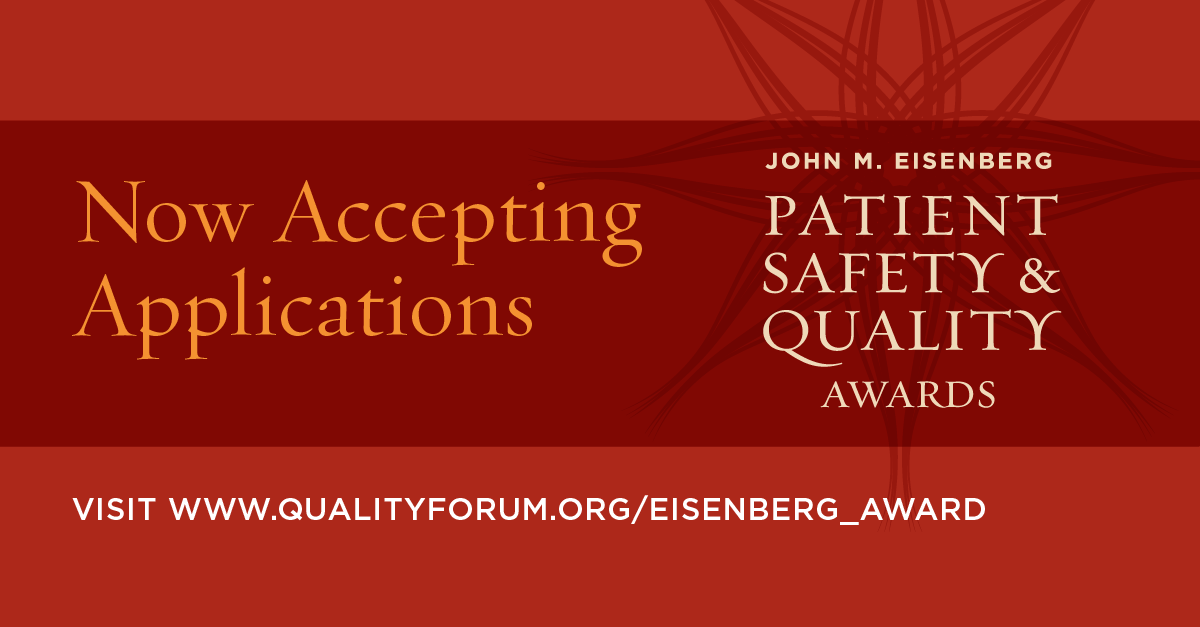By Hardeep Singh, MD, MPH, Chief of the Health Policy, Quality & Informatics Program in the Center for Innovations in Quality, Effectiveness and Safety at Michael E. DeBakey VA Medical Center, and Professor, Baylor College of Medicine
Editor’s Note: Dr. Singh received the 2021 John M. Eisenberg Patient Safety and Quality Award for Individual Achievement. The application for the 2022 award is now open through September 14. Learn more.
As a patient safety researcher, my career had a non-traditional start. I first practiced full-time general medicine in a small town in east Texas and then moved to the Department of Veterans Affairs (VA) as a primary care doctor. During those years, I cared for several patients who had been misdiagnosed. These experiences motivated me to understand and solve patient safety problems through research.
The journey from full-time clinical practice into research was one of uncertainty, struggle and multiple grant failures. It took me several years to transition from full-time practice to research, and these early years taught me many lessons. I learned that researchers need to be persistent. Without perseverance and continued focus, it's easy to give up on research. Because of my early clinical experiences, I made a personal commitment that my research would use a pragmatic, real-world improvement lens and challenge the status quo in quality and safety. I also realized that a multidisciplinary team is best suited to do this complex work and I was fortunate to develop and lead one.
Research Impact
One of our team’s landmark studies quantified the first and only estimate thus far of the frequency of diagnostic error in outpatient care – nearly 12 million adults in the outpatient setting may be misdiagnosed annually. We also conceptualized diagnosis as a process that often unfolds over time and place and involves uncertainty. These characteristics make diagnostic error hard to define and measure. Some of this early work informed better definitions and conceptual approaches that helped advance the field.
When I started working in diagnostic safety, I thought the electronic health record (EHR) would solve many problems. I also was betting on using EHR data to identify and prevent harm, but our work started showing that this was not happening for many reasons. We thus boldly ventured into new and emerging topics, such as the safe use of EHRs and information technology. We developed and then worked with the Office of the National Coordinator for Health Information Technology (ONC) to disseminate the SAFER Guides, a suite of self-assessment checklists for the safe use of EHRs back in 2014. Then in 2021, the Centers for Medicare and Medicaid Services (CMS) released a new policy requiring all U.S. hospitals eligible for CMS payment to use these guides starting in 2022. Our work will now be used by thousands of hospitals and clinicians in the United States.
Much of our work on improving the safety of EHR-based test results communication and follow-up has been translated into policies, products and tools and disseminated across the VA. One of the most significant impacts has been on national VA policy on communicating test results to patients and clinicians. It was also the VA's EHR that enabled us to develop EHR-based e-trigger algorithms to identify diagnostic safety events, which now are adopted by several other non-VA researchers.
Importance of Multi-Disciplinary Collaboration
My team of colleagues and collaborators has been invaluable to this work and includes:
- clinicians from different specialties
- health services researchers
- cognitive scientists
- human factors engineers
- social scientists
- informaticians
- implementation scientists
- research support staff
- patients
One of our team's strengths has been to bridge silos between researchers, clinicians and health system leaders to translate evidence into practice. For example, we used research to influence safety initiatives and/or policy work from multiple stakeholders, including CMS, ONC, National Quality Forum, The Joint Commission, National Academies, American Medical Association, American College of Physicians, Emergency Care Research Institute, Pew Research, Organisation for Economic Co-operation and Development and World Health Organization.
Making a Difference in Patient Care
I see research more like a mission than just a job involving writing grants and papers. I firmly believe that research need not be just about publications, grants and promotions. Making products to impact patient care—tools, strategies, guides—should be the norm and incentivized. Another attribute—and perhaps a message to others doing safety work—is to invest time and energy to translate research into practical resources and innovations for improving patient safety on the front lines of care.
I am grateful to my mentors, collaborators and research team for their unwavering support while I explored uncharted waters of improving diagnosis through multidisciplinary research that involved complex cognitive and systems sciences. Many prior awardees have inspired my passion, making receiving this award even more special. The next step for me is creating more research impact by scaling our work. Plenty of science, strategies, tools and resources are now available to reduce patient harm – and now it's time for action. This involves transforming healthcare delivery systems, supporting clinicians and their care teams, and engaging patients, and I plan to work on all three fronts over the next decade.
Hardeep Singh, MD, MPH, is the Chief of the Health Policy, Quality & Informatics Program in the Center for Innovations in Quality, Effectiveness and Safety at Michael E. DeBakey VA Medical Center, a Professor at Baylor College of Medicine, and recipient of the 2021 John M. Eisenberg Patient Safety and Quality Award for Individual Achievement.
The Eisenberg Awards recognized Dr. Singh for his expansive, pioneering career in diagnostic safety and health IT safety. He has succeeded in translating his research into pragmatic tools, strategies and innovations for improving patient safety. Over the course of his career, he has partnered with institutions such as the Agency for Healthcare Research and Quality (AHRQ) and the ONC to develop and implement tools to improve healthcare IT, including applications to improve diagnosis.



